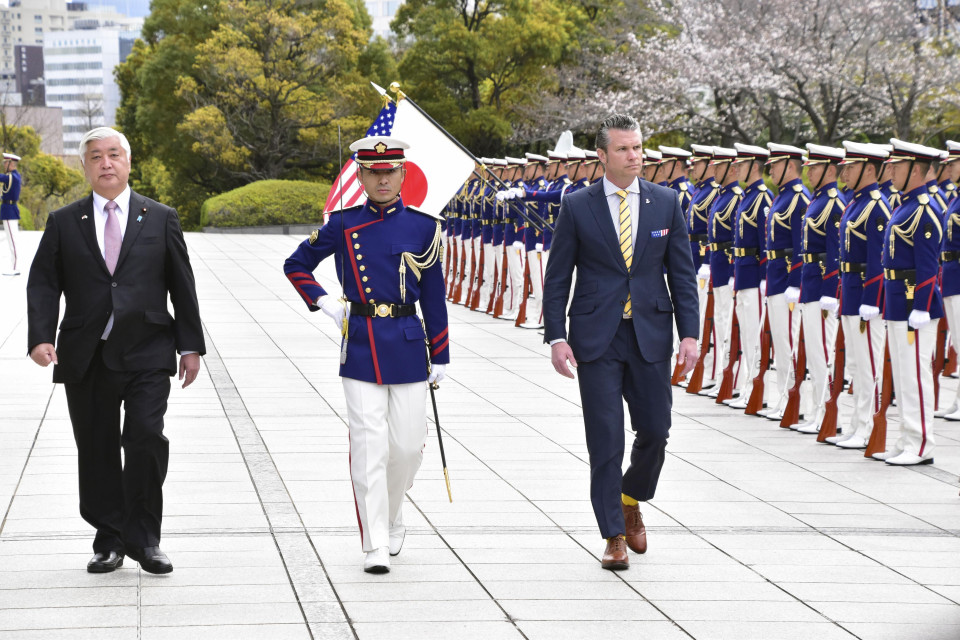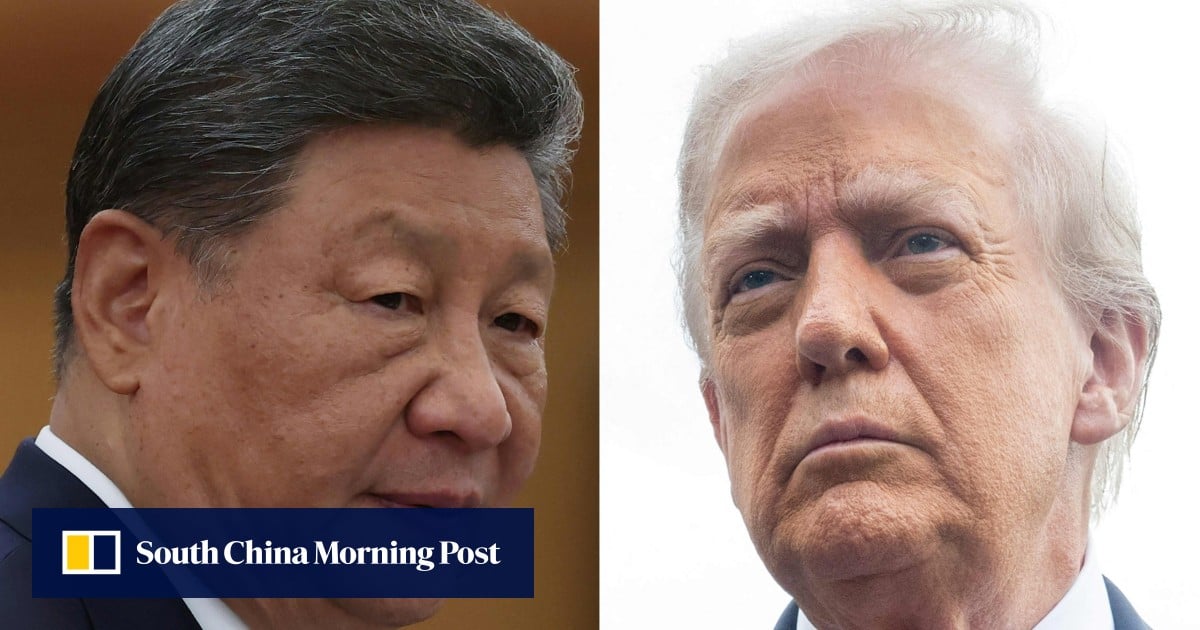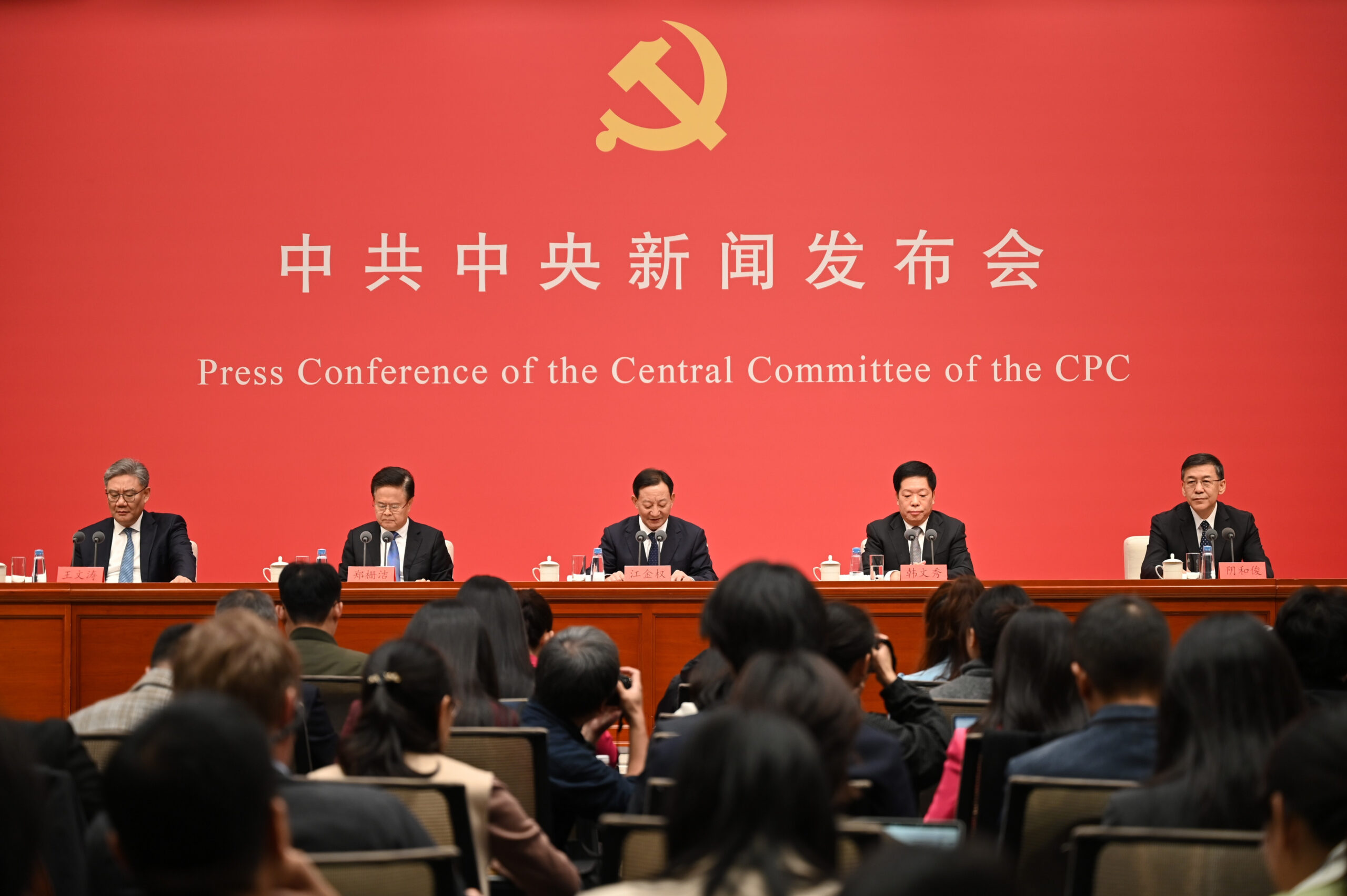Japanese Defense Minister Gen Nakatani and his U.S. counterpart Pete Hegseth are expected to agree to beef up the Japan-U.S. alliance during their meeting Sunday in Tokyo, amid China’s expanding military assertiveness and North Korea’s nuclear and missile development.
The two are also likely to discuss the upgrade of the alliance’s command and control frameworks for better coordination between the Japanese defense forces and the U.S. military, while also seeking to expand cooperation in space and other fields.
U.S. Defense Secretary Pete Hegseth (front R), accompanied by Japanese Defense Minister Gen Nakatani (front L), receives a guard of honor at the Defense Ministry in Tokyo on March 30, 2025. (Kyodo)
Nakatani and Hegseth, who is making his first visit to Japan as Pentagon chief, will hold a joint press conference after their first sit-down, according to the Japanese Defense Ministry.
The meeting comes as Trump, who returned to White House and has reinstated his “America First” mantra, casts the U.S.-Japan security treaty as nonreciprocal and is stepping up pressure on longstanding allies to increase defense spending.
Some U.S. media has also recently reported that the United States could stop a planned expansion of its forces in Japan as part of efforts to slash Defense Department spending.
Nakatani is likely hoping to affirm the U.S. plan to convert U.S. Forces Japan into a joint force headquarters with more operational responsibilities and which will serve as a counterpart to Japan’s newly launched Self-Defense Forces Joint Operations Command.
The upgrade had been agreed during the tenure of Trump’s predecessor Joe Biden, with the U.S. side calling it “the most significant change to U.S. Forces Japan since its creation, and one of the strongest improvements in our military ties with Japan in 70 years.”
The new Japanese SDF command is intended to help better integrate its own ground, maritime and air services, while ensuring smoother coordination with the U.S. military at a time when tensions are heightened over potential contingencies involving Taiwan.
On defense spending, the Japanese government decided in 2022 to increase related outlays to 2 percent of its gross domestic product by fiscal 2027 in a significant shift in its postwar security policy under its war-renouncing Constitution.
Trump, who took office in January, has repeatedly said U.S. allies can and should do more in defense spending, but he did not make any such complaints publicly when Japanese Prime Minister Shigeru Ishiba visited Washington in February.
In late January, Nakatani and Hegseth agreed to strengthen the alliance and confirmed that their security treaty covers the Tokyo-controlled, Beijing-claimed Senkaku Islands in the East China Sea during their phone talks, their first conversation as defense chiefs.
On Saturday, the two visited the remote Pacific island of Iwoto, also known as Iwojima, together with Ishiba to attend a ceremony marking the 80th anniversary of a month-long fierce World War II battle there from February 1945 between the Japanese and U.S. forces.
Hegseth’s first official trip to the Indo-Pacific region began Monday and has included stopovers in Hawaii, Guam and the Philippines, another key U.S. ally in Asia.
The former Fox News host, meanwhile, faces questions at home over a scandal related to the sharing of highly sensitive military plans in a group chat that accidentally involved a journalist. He and other high-ranking Trump administration officials have faced criticism for their roles in the security breach.
Related coverage:
Pentagon chief Hegseth shows unity with Japan at WWII site Iwoto
China eyes teaming up with Japan, South Korea to denuclearize North Korea


